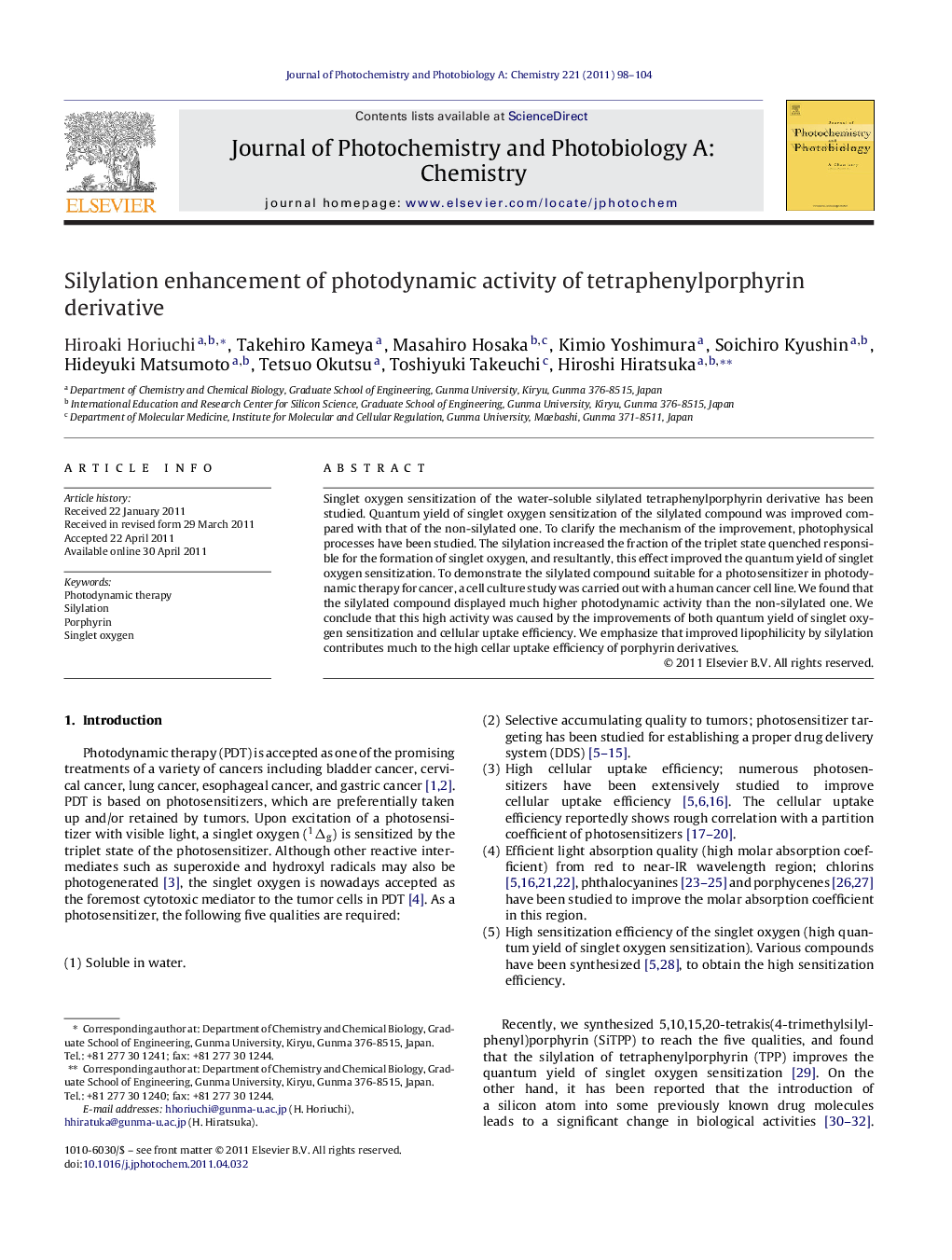| Article ID | Journal | Published Year | Pages | File Type |
|---|---|---|---|---|
| 27542 | Journal of Photochemistry and Photobiology A: Chemistry | 2011 | 7 Pages |
Singlet oxygen sensitization of the water-soluble silylated tetraphenylporphyrin derivative has been studied. Quantum yield of singlet oxygen sensitization of the silylated compound was improved compared with that of the non-silylated one. To clarify the mechanism of the improvement, photophysical processes have been studied. The silylation increased the fraction of the triplet state quenched responsible for the formation of singlet oxygen, and resultantly, this effect improved the quantum yield of singlet oxygen sensitization. To demonstrate the silylated compound suitable for a photosensitizer in photodynamic therapy for cancer, a cell culture study was carried out with a human cancer cell line. We found that the silylated compound displayed much higher photodynamic activity than the non-silylated one. We conclude that this high activity was caused by the improvements of both quantum yield of singlet oxygen sensitization and cellular uptake efficiency. We emphasize that improved lipophilicity by silylation contributes much to the high cellar uptake efficiency of porphyrin derivatives.
Graphical abstractFigure optionsDownload full-size imageDownload as PowerPoint slideHighlights► The silylation of water-soluble porphyrin improves the singlet oxygen sensitization. ► Mechanism of the improvement has been clarified. ► The silylation also improves the cellular uptake efficiency for human cancer cells. ► As a result, the photodynamic activity enhanced by the silylation.
